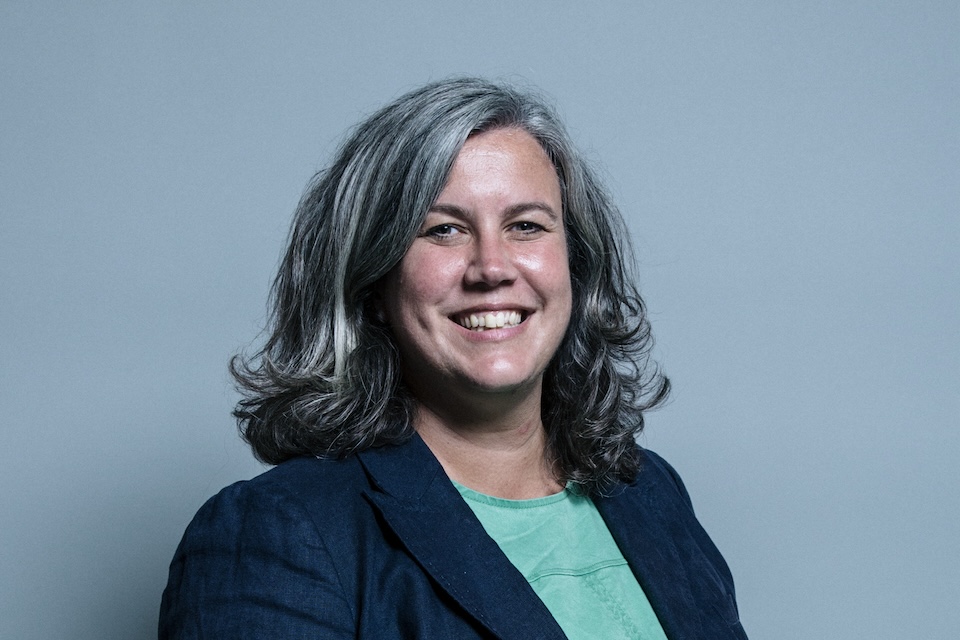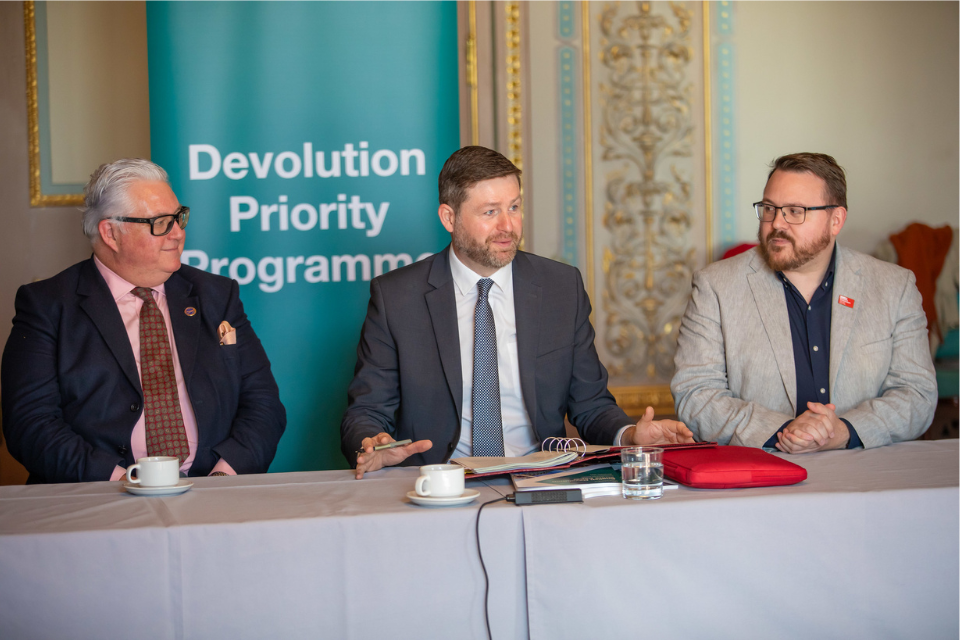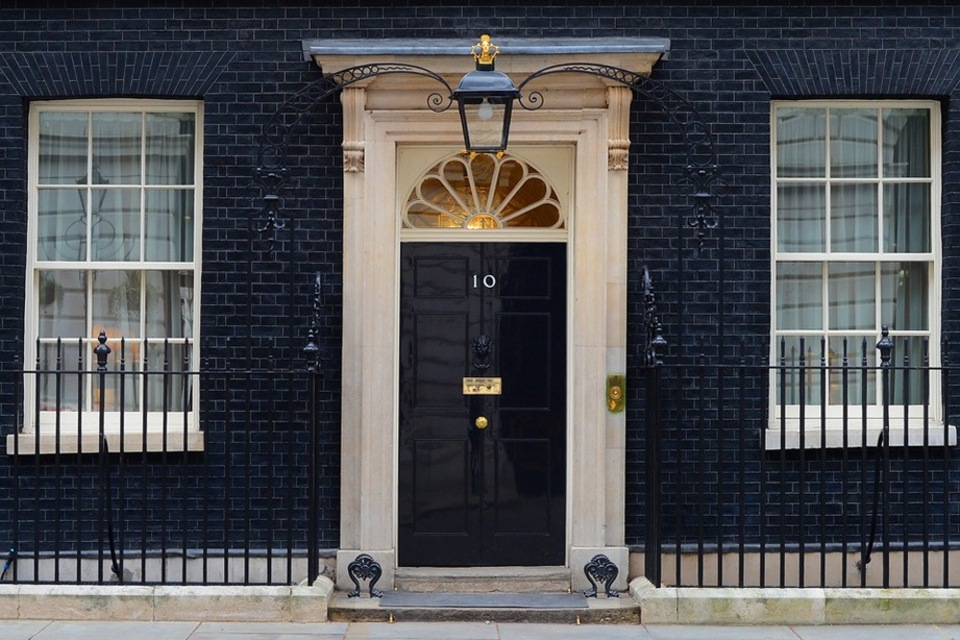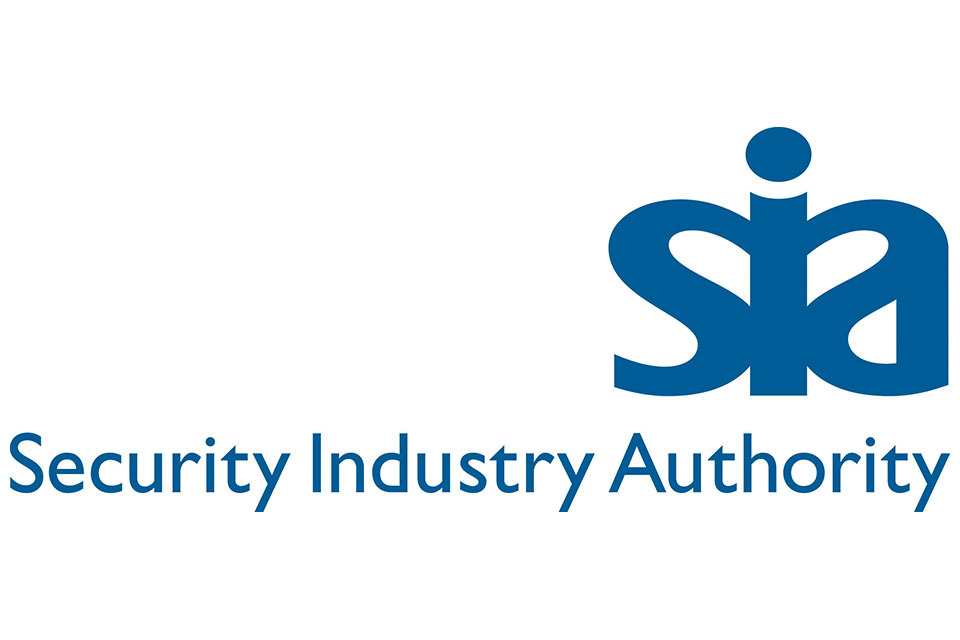Overview
Today (17 July 2025) I am publishing this government’s second update to Parliament on the progress of High Speed Two (HS2).
In my previous report, I set out the difficult position that we inherited. HS2 has suffered from repeated cost increases and delays for too long. Although there have been external factors outside of the programme’s control, it has also been mismanaged. It is now clear that cost estimates were overly optimistic and the programme moved to construction too quickly when designs were still immature. Delivery of the programme has not been sufficiently controlled, with a poorly performing supply chain that was insufficiently incentivised. There have been repeated changes in policy, scope and funding and excessive costs incurred in achieving environmental and planning compliance. This means delayed benefits and cost increases incurred on HS2 have diverted billions of pounds from other vital transport priorities.
This is unacceptable, the cycle of cost increases and delays must be broken and I am determined to achieve this. The project is now under new leadership, and I have tasked HS2 Ltd’s new CEO, Mark Wild, with leading a comprehensive reset of the programme. He is making progress, but this is a huge task, and we need to ensure he has a robust plan for delivering the programme to completion in a controlled way and at the lowest reasonable cost. To this end, the department will work with him and HS2 Ltd over the coming months to advise me on the decisions needed to reset HS2, with the aim of providing an updated delivery baseline and funding envelope in 2026. Until this work is completed, this government is not in a position to say with confidence how much HS2 will cost or when it will be delivered. That is a deeply unsatisfactory position, but it is necessary to complete the hard work we have embarked upon.
Effective ministerial oversight will be at the heart of this reset. The Rail Minister and I meet regularly with Mark Wild to assess progress and in March, I chaired a meeting of the Ministerial Task Force with the Chief Secretary to the Treasury, focusing on completing the programme in a controlled way. In June, I appointed Mike Brown as the new Chair of the HS2 Ltd Board to help us drive effective oversight and accountability on the programme. Both Mark Wild and Mike Brown have experience in major project recovery from Crossrail, which will be invaluable to this task. Mike’s immediate priorities will include supporting Mark and strengthening the challenge that the Board provides to HS2 Ltd, to complement ministerial oversight.
The reset needs to be guided by the lessons learned from HS2’s delivery to date. In June, I published the major transport projects governance and assurance review, led by James Stewart. This report set out recommendations and actions that we are taking to avoid repeating the mistakes of the past, helping to bring HS2 under control and to improve the delivery of future infrastructure projects.
The government’s determination to now see this programme delivered as efficiently as possible is underpinned by the allocation of £25.3 billion (nominal prices) of funding over 4 years in the Spending Review, as set out in the financial annex.
Despite the evident challenges, HS2 Ltd, its suppliers and over 33,000 workers have maintained steady progress on construction, achieving major delivery milestones since my last report.
HS2 will foster economic growth in support of this government’s mission. Research commissioned by HS2 Ltd has found that the prospective arrival of HS2 is already leading to redevelopment around new HS2 stations, demonstrating the early potential of this scheme to act as a catalyst for investment in businesses, new jobs and homes. The research estimates that the programme will deliver economic uplifts of £10 billion in the West Midlands and £10 billion around Old Oak Common station in west London over the next 10 years.
Delivering an HS2 station at Euston remains a priority to realise the programme’s benefits. Following our commitment to funding the tunnelling required to bring HS2 to central London, we continue to work with key partners to develop affordable, integrated plans for the Euston station campus alongside significant levels of local development, including housing and life sciences institutions. In parallel, we recently announced that a Euston Delivery Company will be established to oversee the development of the whole Euston campus, which will comprise the new HS2 station, an upgraded Network Rail station and enhancements to the London Underground station and local transport facilities, along with a significant level of development. We welcome the joint venture that The Crown Estate has announced with Lendlease, our development partner at Euston. As set out in the 10-Year Infrastructure Strategy, we are exploring the use of private capital to design, build, finance and maintain the HS2 station.
Finally, beyond individual rail schemes, the rail network must be viewed as a whole. HS2 will play a key part in our ambition to improve rail for passengers, with its services and benefits extending far beyond London and Birmingham, including the capacity it releases for other regional and London services.
Delivery update
Schedule and cost
As I set out in the House of Commons on 18 June, based on Mark Wild’s initial advice, I see no route by which trains can be running by 2033 as previously planned. Mark has committed to establishing and delivering to a new baseline in 2026. Once this work is complete, we will have an agreed estimate of how much the project will cost and when it will be delivered.
Whilst the reset is ongoing, the department is managing HS2 Ltd through strengthened in-year controls, including challenging targets and metrics to deliver within annual budgets. To drive in-year delivery performance, an enhanced level of governance and assurance has also been implemented, reflecting the recommendations of James Stewart’s review.
This year, HS2 Ltd has rescheduled some work to ensure it operates within its annual financial settlement.
Expenditure
To the end of April 2025, £40.5 billion (nominal prices) had been spent on the HS2 programme. This is provided in more detail in the financial annex, based on data provided by HS2 Ltd.
Spend to date information covers the period up to the end of April 2025. Unless stated otherwise, all figures are presented in nominal prices.
Following the recent conclusion of the Spending Review, the department has reached a settlement with HM Treasury to fund the delivery of HS2, with £25.3 billion (nominal prices) covering financial years 2026 to 2027 to 2029 to 2030.
This funding will enable the reset of the HS2 programme under the leadership of Mark Wild, addressing longstanding delivery challenges. It will enable HS2 to move forward with a more secure delivery plan and will support progress at the lowest reasonable cost.
This settlement will support the continued delivery of Phase 1, providing funding for works from Old Oak Common to Birmingham Curzon Street and Handsacre Junction, Euston Tunnels and Approaches and Euston Station enabling works.
The HS2 programme is currently in a period of high spend, with much of it in active construction. The department expects HS2 Ltd’s expenditure to become noticeably lower over the next Spending Review period as delivery of the programme progresses.
The department has updated its reporting of historic programme expenditure from 2019 prices to nominal prices. Once the programme reset is complete and a new baseline agreed, HS2 Ltd will also uplift the price base for programme reporting and for the revised cost estimate. The department will consider how often the price base should be uplifted until the end of the programme.
Construction progress
Over 70% of HS2’s 32 miles of bored and mined tunnels between London and Birmingham have now been completed.
Construction is progressing across the route, with active works underway on 44 viaducts, 126 bridges, 75 embankments and 60 cuttings.
The Northolt Tunnels, which will link Old Oak Common Station to West Ruislip, were recently completed. Constructed in 2 phases – East and West – the tunnels were excavated using 4 tunnel boring machines (TBMs). TBMs Sushila and Caroline completed mining the western section in April 2025, while mining on the eastern section, led by TBMs Emily and Anne, was completed at the end of June 2025.
In May, the first Bromford Tunnel broke through, connecting Warwickshire to Birmingham, marking the completion of the first section of the 3.5-mile tunnel.
In April, a 14,500-tonne box structure that will carry the high-speed line was successfully installed under the A46. The installation utilised innovative civil and structural engineering techniques, which involved constructing the box on land before pushing it across a guiding raft over 64 metres into place.
Over 8.5 million cubic metres of soil have been excavated, representing 73% of the total planned earthworks.
In February, the first viaduct in the Delta Junction in North Warwickshire was completed, marking both a significant milestone in the construction of HS2 in the region and the first use of an innovative giant cantilever system in the UK.
At Interchange Station in Solihull, enabling works have commenced on site, including surveys and ground investigations to inform the detailed design.
The ‘systems and service’ tender was launched in February 2025 for the Automated People Mover (APM), which will provide connectivity between Interchange Station, the National Exhibition Centre, Birmingham International Station and Birmingham Airport.
At Curzon Street Station in central Birmingham, piling works continue to progress with only the western section remaining. For this financial year, the focus will be on completing the design before construction starts next year. The updated Schedule 17 planning consents for the revised station designs were approved by Birmingham City Council on 8 May 2025. Schedule 17 of the High Speed Rail (London – West Midlands) Act 2017 establishes a process for the approval of matters related to the design and construction of the railway. It requires HS2 Ltd to seek approval from the appropriate planning authority, in this case, Birmingham City Council. This approval shall allow HS2 Ltd to construct the station with improvements to the visuals of the station and refinements to the long-term maintenance requirements.
At Old Oak Common Station in west London, the tunnel boring machines are being assembled with preparations currently underway to enable their launch towards Euston in spring 2026.
In November 2024, we reached a key milestone with the award of the rail systems contracts worth around £3 billion in current prices. The contracts commenced in February 2025, but work on site will not start until main works civils are largely complete. Procurement of the Washwood Heath Depot and the National Integrated Control Centre continues.
Lessons from the contracting failures of HS2’s main works programme have been firmly embedded in the systems contracts. The design of rail systems is more advanced at this stage than it was for main works civils, giving better cost certainty. HS2 Ltd has established an alliance with stronger incentives to ensure suppliers share risk, allowing us to manage costs better and drive performance. The contracts require fewer consents to be granted as well.
Mobilisation on the rail systems contract has started and timelines are being developed in line with the wider programme challenges noted elsewhere in this report. There will be a formal review at the end of the design stage to make sure all parties are ready to start work on site, again learning from main works civils.
Euston
The department continues to work with key partners to develop affordable, integrated plans for the Euston station campus. In parallel, enabling works are continuing to ready the HS2 station site for the main construction programme.
In terms of the delivery model, the government announced in its 10-Year Infrastructure Strategy that a Euston Delivery Company will be established to oversee the development of the whole Euston campus. The new delivery model will involve a changed role for HS2 Ltd but will go much broader than that to address historical challenges at the site. HS2 Ltd will remain a key partner, continuing to carry out important work at Euston.
The department also continues to work with partners to examine available delivery and private finance options that will realise the great regeneration potential of the Euston area alongside the improvement of transport links.
Specifically, the department is exploring options for various elements of the programme to be funded through a combination of private finance, development receipts, and potential local contributions such as tax increment financing, with a degree of residual public funding. The department has been engaging closely with HM Treasury and the National Infrastructure and Service Transformation Authority as it continues to develop its plans, and has appointed specialist advisors to ensure it has access to expert support.
As we progress our plans to reinitiate delivery, we are embedding the recommendations of James Stewart’s review through the new delivery model and working closely with partners to manage risks sensibly and collectively. We will continue to work with key partners with the aim of restarting design later this year. No final decisions have been made regarding the preferred mechanisms to securing funding and finance, including private finance options; further details will be shared in due course.
Legal and planning challenges
The delivery of HS2 has continued during this period to be the subject of both legal and planning challenges, which have added significant cost, uncertainty and potential for delay. It is right that there are checks and balances embedded in our legal and planning systems to ensure local interests are considered when national projects are implemented. There is, however, the risk that these rights are used to frustrate the delivery of consented projects, with legal challenges and planning powers used in a way that drives up costs to both local and national taxpayers, rather than protecting local interests.
The HS2 planning and environmental regime set out in the High Speed Rail (London – West Midlands) Act 2017 has been subject to multiple attempts at legal challenge from other public bodies, most recently in relation to the extension of the Bromford tunnel in North Warwickshire – with a judgment delivered in the project’s favour. Since Royal Assent for the act, there have been 9 legal challenges brought by other public bodies. In almost all of these cases, the courts have ultimately found in the project’s favour, but not in time to avoid significant uncertainty, costly delays, or additional legal costs for both parties – the majority of which has unfortunately had to be borne by local taxpayers.
In the same time period, there have also been 25 costly and time-consuming appeals relating to the HS2 planning regime. Almost all of these appeals have ultimately been determined in HS2’s favour. The government continues to monitor this issue closely and will consider further interventions where appropriate, alongside its wider work on planning reform.
Fraud investigation
We are aware of the claims made in relation to a labour supplier on part of the route. The allegations concern inflated invoices and improper PAYE charges, potentially defrauding taxpayers. HS2 Ltd treats all whistleblower allegations seriously and an investigation was launched earlier this year into these allegations. Furthermore, HS2 Ltd has formally reported the allegations to HMRC and HS2 Ltd’s contractor Balfour Beatty VINCI has implemented additional monitoring and controls.
Benefits
Housing
Despite all the challenges, HS2 represents a significant plank of the government’s Plan for Change, our growth and housing missions, and our ambition to deliver infrastructure that works for the whole country.
HS2 provides an unparalleled opportunity to build new homes, create jobs and attract investment. The redevelopment of land around the new HS2 stations will enable the ideal conditions for business, new jobs and homes and will act as a catalyst for further investment and wider growth.
In the West Midlands, HS2 is estimated to support directly 4,000 new homes around Curzon Street Station and 3,000 new homes around Interchange Station as part of the Arden Cross development in Solihull. Additionally, research from a February 2024 report suggests that HS2 will add £10 billion to the West Midlands economy over the next 10 years and help generate over 41,000 additional homes.
In west London, local partners estimate that HS2 will, in the long term, support the delivery of up to 25,500 new homes around Old Oak Common station, including 9,000 new homes as part of the first phase of development at Old Oak West. Separate research from March 2025 estimates that HS2 will add £10 billion to the west London economy over the next 10 years and support 22,000 additional homes. Around Euston in central London, HS2 will support the delivery of thousands of new homes and the development of a new ‘knowledge quarter’.
There could also be new housing opportunities along the West Coast Mainline between London and the West Midlands, at places that gain improved local services as a result of network capacity released by HS2. Decisions have not yet been made by the government on where these additional services will run.
Jobs and skills
In addition to long-term ambitions, HS2 is contributing to economic growth now. The programme is currently supporting over 33,000 jobs and over 3,400 UK businesses in the supply chain across the country, including over 2,500 small and medium-sized enterprises.
HS2 is also helping to break down barriers to opportunity and training a skilled workforce for the UK’s wider rail and construction industries. The programme is attracting new and diverse people to the industry. Having created over 1,800 apprenticeships and supported over 5,000 previously unemployed people back into work on the project since 2017, the programme is helping to bridge the skills gap and tackle unemployment along the HS2 construction corridor. By drawing on and developing world-class skills, HS2 will leave a positive skills legacy that will develop and strengthen the country’s construction workforce for the years to come.
Environment
Updated designs for ecological mitigation over the past six months have seen further progress made on the target to achieve ‘no net loss’ to biodiversity by the end of the construction programme. At the end of 2024 to 2025, the position for area-based habitats has improved while designs for hedgerows and watercourse habitats remained on track to deliver a net gain in biodiversity.
HS2 Ltd is also seeking to reduce the whole-life carbon emissions associated with construction of HS2 by 50%, aiming to maximise productivity and cost-saving measures to achieve this goal. At the end of 2024 to 2025, the programme had so far achieved a 33.8% reduction in carbon against that 50% target.
Community impacts, land and property
Appointment of a new independent commissioner
I am pleased to announce the appointment of Robert Herga as the independent High Speed Rail Residents’ and Construction Commissioner, following an open competition.
The commissioner is responsible for holding HS2 Ltd and the government accountable to their commitments to treat those people directly affected by the HS2 scheme with sensitivity and respect. The commissioner also makes themselves available to intervene in unresolved land and property disputes, as an objective and independent voice, focussing on timely settlement to save costs on both sides. This new role combines the previous roles of HS2 Construction Commissioner and HS2 Residents’ Commissioner.
HS2 Ltd received 1209 complaints during 2024 to 2025, an increase of 102 when compared to the previous year. At this stage of the programme, the vast majority of complaints are construction-related, with over half about traffic and transport impacts and about one-third related to noise and vibration impacts. Where communities have complaints, HS2 Ltd seeks to resolve issues quickly. Over the last financial year, HS2 Ltd resolved 100% of urgent complaints within 2 working days and resolved 96% of all other complaints within 20 working days or less.
Local funds
The HS2 project is mitigating some of the impacts of construction on local places through the Community and Environment Fund and the Business and Local Economy Fund.
As at June 2025, over £19 million has been channelled through these funds towards 353 local community projects.
Land and property on the former Phase 2b Eastern Leg
I am today formally lifting the safeguarding directions for the former Phase 2b Eastern Leg (between the West Midlands and Leeds), removing the uncertainty that has affected many people along the former route. Safeguarding along the former Phase 2b Western Leg (between Crewe and Manchester) is not being changed as part of this, and an update on future plans for safeguarding on this section will be provided in due course alongside broader plans for Northern Powerhouse Rail.
One small area to the south of the existing station in central Leeds, previously required for the new HS2 station, will remain safeguarded to allow for potential enhancements to the existing station, including for onward travel.
I have also today closed the Rural Support Zone, Express Purchase, Rent Back, and the Need to Sell property schemes along the former Phase 2b Eastern Leg. Existing applications will be reviewed on a case-by-case basis.
Removing safeguarding along the majority of the former HS2 Phase 2b Eastern Leg means we are now able to initiate a programme to dispose of over 550 properties on the former Eastern Leg that are no longer required. We expect disposals on the open market to begin in 2026. Before then, former owners whose property was acquired under statutory blight will have the opportunity to reacquire their former property at the current market value.
We will dispose of land and property in a sensible and sensitive way, ensuring value for money for the taxpayer and avoiding disruption to local property markets.
I have deposited the safeguarding directions and relevant documents in the House libraries.
Programme governance
Programme reset
Following Mark Wild’s arrival as the new HS2 Ltd CEO in December 2024, I commissioned him to set out a plan to deliver the remaining HS2 infrastructure in a safe, controlled and efficient manner and bring the new railway into operational use, for the lowest reasonable cost to the taxpayer. Mark gave me his initial diagnosis at the end of March and I expect him to advise me further over the coming months.
His initial assessment summarises the currently uncontrolled state of the programme and the significant challenge of achieving a programme reset that minimises delays and stops further cost increases. He also confirmed his view that, based on the current scope and delivery strategy, it is not possible to deliver HS2’s opening stage between Old Oak Common and Birmingham Curzon Street within the stated range of 2029 to 2033, and that the funding envelope set by the previous government will not be sufficient. If interventions are not enacted, costs will rise and delivery will be further delayed.
As such, it is now the work of Mark and his team to put in place measures to bring the railway into service as quickly and cost effectively as possible, with government support and constructive challenge. As part of his work, Mark will advise me on updated estimates to give the government and taxpayers certainty over HS2’s costs and schedule – breaking the cycle of cost increases and overruns.
The HS2 reset will involve
- setting a new realistic cost and schedule baseline within which we can complete the programme
- resetting the commercial relationship with HS2’s principal civil works suppliers to drive increased productivity and control cost
- making sure HS2 Ltd has the right skills and capabilities to deliver the remaining work, including improvements to setup, operating model, leadership, culture, effectiveness and capabilities
- improving how the department and wider government sponsors the delivery of HS2, drawing on the findings and recommendations from James Stewart’s independent review and the department’s own work on lessons
The scale and complexity of resetting the programme is a major challenge. Mark Wild carried out a similar process as the CEO of Crossrail, putting the project back on track and delivering a successful opening of the Elizabeth line in 2022. It is important we take this opportunity to get it right, which is why the reset will take time and involve close working between HS2 Ltd, DfT and the rest of the government. The ambition is for an updated and assured full baseline to measure performance in 2026.
In parallel, the department plans to publish an updated programme business case in 2026, once agreed cost and schedule estimates are available.
Oversight
On 18 March 2025, I chaired a meeting of the reconvened Ministerial Task Force for HS2. I was joined by the Rail Minister, the Chief Secretary to the Treasury, Mark Wild and other senior leaders from HS2 Ltd and across the government to scrutinise initial plans on resetting the programme and delivering HS2 at the lowest reasonable cost.
On 31 March 2025, Sir Jon Thompson stepped down as HS2 Ltd Chair. On 18 June, I was pleased to announce Mike Brown as the new Chair of HS2 Ltd. Mike Brown brings decades of experience in delivering major transport projects as former TfL Commissioner, and member of the team that turned Crossrail into the Elizabeth Line. He will lead the Board and work with Mark Wild on the urgent priority to reset the project.
It is clear from Mark Wild’s assessment that HS2 Ltd currently falls far short of having the capability and culture needed to deliver the programme effectively. Mike Brown has been tasked with strengthening the HS2 Ltd Board to more effectively support and challenge Mark Wild in conducting the reset of HS2 and the safe delivery of Phase 1 at the lowest reasonable cost. To support strengthened board oversight, a recruitment exercise has been launched to appoint new non-executive directors to bolster board capability and capacity.
I would like to thank Elaine Holt for leading the Board in her capacity as Deputy Chair over the period from 1 April to 13 July.
We have also enacted temporary arrangements which establish additional control measures and monitoring to ensure the programme is managed properly. This will bridge the period leading to the formal reset of the programme.
Capturing, applying and sharing lessons
Following my last report, the major transport projects governance and assurance review, led by James Stewart, has concluded. It has provided important lessons that can be applied to HS2, the department’s other capital projects and infrastructure schemes across the government.
Most major programmes experience difficulties in their delivery. However, the failures seen on HS2 are extreme, with costs increasing continuously over many years and very rapidly since the start of construction. There is no single explanation for these failings – they span across its lifecycle from conception through to delivery and from governmental sponsorship, through planning and consenting, to how the government has orchestrated its delivery between HS2 Ltd and the construction supply chain.
We have worked closely with HM Treasury and the National Infrastructure and Service Transformation Authority (NISTA) to identify lessons from the HS2 programme.
The department is applying the lessons from James Stewart’s and other reviews, including embedding the lessons into the HS2 programme reset plan and in developing and delivering other transport and wider infrastructure projects.
High ambition at inception
Early decisions resulted in an exceptionally high-specification and high-speed railway, which drove higher costs and meant that tried and tested approaches could not be relied upon. In future programmes, opportunities for reducing cost based on the minimum acceptable design should be explored and use of bespoke or cutting-edge specifications should be avoided unless absolutely necessary.
Scope changes
Since HS2’s inception, the scope of the programme has been progressively reduced. Scope reductions have been in part a result of cost increases, but have added to delivery challenges and left the residual scheme over-specified in relation to the benefits it will deliver.
To address both of these lessons, the department has contributed to the Office for Value for Money’s study into the governance and budgeting arrangements for ‘mega projects’ to make sure that lessons from HS2 are applied to the wider government’s approach to infrastructure delivery.
Governance
Governance has evolved through the lifetime of the project and in the light of pressures; however, it has not been sufficiently effective in identifying and managing the scale of challenges, including in relation to cost management and capability. We have implemented a series of changes in the governance of the programme to respond to James Stewart’s recommendations. We held the first shareholder board on 28 May, which provided strategic-level oversight of the programme from the Permanent Secretary, Mark Wild, HS2 Ltd special directors, the senior responsible officer, interim HS2 Ltd chair and senior DfT and HMT Officials. A renewed programme and performance board now meets monthly to focus on the effective delivery of Phase 1 (including Euston) against agreed schedule, cost and scope.
Cost estimation
Since the inception of the project, internal and external experts have comprehensively scrutinised cost estimates. However, despite this, estimates have consistently proven to be wrong.
Last year, HS2 Ltd and departmental officials jointly concluded a comprehensive external review of the current approach to cost estimation and programme control. HS2 Ltd has been implementing an action plan to strengthen these vital areas of project control. A priority of the HS2 reset is setting a new, realistic and assured baseline of cost and schedule within which we can complete the programme. In addition, our progress to date means that evidence based on past experience, rather than forecast estimates, can be utilised to inform current and future delivery of the programme, including ongoing progress on civils delivery and the recent letting of the systems contracts.
To validate this new estimate, there is also work underway to verify the civil work delivered to date and its cost. This will allow the programme to validate true delivery costs against the original estimates. This information, combined with continued investment in collating benchmarking data from international comparators, will give us a more reliable ‘should cost’ model for the remainder of the programme. This ‘should cost’ model will enable a more accurate assessment of the reasonableness of assumptions in the cost estimate.
We have learnt that realistic ranges, rather than single target costs, should be set at the early stage of projects. Ranges should only narrow when there is sufficient certainty from external data, such as contract prices. We will adopt an approach that uses robustly verified or benchmarked cost data, with ranges and sensitivity analysis, when taking future programme investment decisions. HS2 will lead the way in ensuring that cost analysis is rigorously incorporated into the design of later procurements and decisions. In parallel, the government has made significant improvements in the analysis of investment benefits in recent years.
Challenges of building large-scale infrastructure
Meeting environmental standards and planning requirements has presented a significant challenge to the delivery of the project and has added to cost. It is now clear that the early stages of HS2 scheme development underestimated the planning and regulatory challenges of designing and building a new high-speed railway whilst meeting the expectations of local planning and highway authorities, and complying with the latest safety, security and environmental standards. The granting of consents has been subject to routine challenge, and the need for expensive mitigations to meet legal obligations (such as the bat mitigation structure at Sheephouse Wood in Buckinghamshire) has increased the cost of delivering the railway.
The government is already implementing far-reaching reforms to ensure economic infrastructure can be delivered more efficiently. To strike a better balance between avoiding costs and delays on agreed schemes whilst allowing local scrutiny, Ministers will be able to intervene more actively in the process within the existing planning framework, utilising the reforms in the Planning and Infrastructure Bill once enacted, as well as considering whether further alterations to the HS2 planning framework could bring benefits for efficient infrastructure delivery and to taxpayers more generally.
Capability challenges
Costs have increased in part due to insufficient capability in HS2 Ltd and the supply chain in delivering a project of this scale. There has been insufficient focus on the client relationship, too many of HS2’s resources were allocated to the wrong place and contract management and project control were not effective. This led to uncontrolled costs and extremely poor productivity and performance from the supply chain. We will be working with Mark Wild and the Board of HS2 Ltd to address the areas where challenges have been identified, such as the need for Mark Wild to put in place a high-calibre and enduring leadership team and to reshape the organisation to deliver efficiently. This will be a priority in the programme reset.
Ineffective incentives
HS2 Ltd’s current commercial contracting strategy has not proved effective at controlling costs and fairly attributing responsibility for risks. The contract incentives have focused on providing positive incentives against target costs; however, as costs escalated and changes arose, the incentivised cost targets were exceeded, leading to no positive incentive to deliver at lower cost. Some risks which should have been borne by suppliers have also been transferred to taxpayers. In the future we need incentives and risk allocation that deliver for taxpayers as well as supplier shareholders. This work is being embedded through our engagement across the government, to ensure major infrastructure projects are based on effective commercial contracts and incentives going forward.
Financial annex
The information on HS2’s overall spend to date and budget is now being provided in nominal (cash) terms following a commitment made by the department to the Public Accounts Committee to express the costs of the programme in a more up-to-date price base and better capture the inflation incurred since 2019. The government will provide further details on the 2025 to 2026 position in cash terms as part of the standard main estimates report to Parliament.
Historic and forecast expenditure
Nominal prices, including land and property.
| Phase | Overall spend to date (£ billion) | 2025 to 2026 budget (£ billion) | 2025 to 2026 forecast (£ billion) | 2025 to 2026 variance (£ billion) |
|---|---|---|---|---|
| Phase 1 total | 37.9 | 7.1 | 7.1 | 0.0 |
| Civils | 26.4 | 5.4 | 5.4 | 0.0 |
| Stations | 2.3 | 0.6 | 0.6 | 0.0 |
| Systems | 2.0 | 0.3 | 0.3 | 0.0 |
| Phase 1 indirects | 3.5 | 0.4 | 0.4 | 0.0 |
| Land and property Phase 1 | 3.6 | 0.3 | 0.3 | 0.0 |
| Former Phase 2 | 2.6 | 0.1 | 0.1 | 0.0 |
| Overall total | 40.5 | 7.2 | 7.2 | 0.0 |
Notes for the table
[1] The figures set out in the table have been rounded to aid legibility. Due to this, they do not always tally.
[2] Spend to date for Phase 1 includes a £0.6 billion liability (provision) representing the department’s obligation to purchase land and property.
[3] To enable comparison with the figures presented in the December 2024 Parliamentary Report which were in 2019 prices, the equivalent total overall spends to date on Phase 1 and on Former Phase 2 in 2019 prices are £33.11 billion and £2.5 billion respectively and the 2025 to 2026 budgets for Phase 1 and for Former Phase 2 in 2019 prices are £5.4 billion and £0.1 billion respectively.
HS2 spending review settlement
Settlement for total spending review period (2026 to 2030) £25.3 billion (nominal prices).








